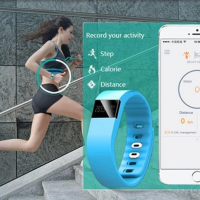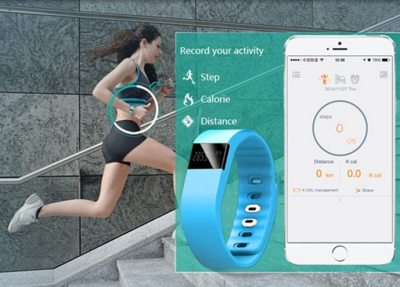

What if you could monitor the health of your heart without visiting your doctor’s office? Or consult with a licensed therapist — at 3 a.m. when you’re breaking down, not the next day? Technology makes all this possible and more. The use of apps and robotics is transforming the medical field. Patients benefit from these advances today, and providers use them to elevate their practices. Here are just a few examples of how!
1. Sensors Give Real-Time Health Updates
In the past, if you had a heart disorder that required routine monitoring, you had to make regular visits to your physician. Depending on the severity of your condition, you may have needed considerable time in the hospital. However, wearable devices can now monitor your cardiac rhythms and electrical currents from home. These devices hold promise to prevent heart attacks and strokes as well.
Devices with sensors can send real-time feedback to your providers. They can contact you to seek emergency care if your vitals indicate the need. When seconds count, this tech can save lives.
2. Healthcare Providers Can Expand Their Hours
If you work a 9-5 job, you might find making regular physician checkups problematic — especially if you lack paid sick leave. Many hourly employees regularly decide between attending doctor appointments and earning enough to pay rent. Their immediate need for a roof over their head supersedes routine medical checkups. While missing one date won’t likely result in harm, repeatedly missing follow-up appointments can result in minor problems eventually spiraling into complicated ones.
Technology enables health care providers to work from the privacy of home or anywhere — meaning they can respect alternative schedules. A therapist who hesitates to work evening hours in a rough neighborhood, for example, can consult with patients via telemedicine. They can also treat patients in rural areas who live hours from the nearest clinic. This practice expands care to the highest number of individuals.
3. Patients Can Track Their Progress
Perhaps you struggled to quit smoking cold turkey in the past, and you’ve decided to try a gradual approach. How will you know if you’ve genuinely reduced your intake? You could track your spending — or you could tap your phone screen each time you light up.
You can use a pedometer app to track the number of calories you burn. Other apps will let you track your heart rate by placing your finger on your phone’s camera lens. You can even calculate your most fertile days of the month with the help of technology.
4. Medical Records Gain New Consistency
Previously, if you moved away from your family physician, you had to request a paper copy of your medical records well in advance. Now, you can view your test results with a few mouse clicks and a password. The advent of secure cloud record storage has empowered patients to take greater charge of their care. Patients who wished to switch doctors for reasons other than relocation sometimes faced issues with obtaining records. Now, all they need to do is click and download.
5. Improved Mental Health Support Services
It’s the middle of the night, you can’t sleep — and you’re seriously contemplating suicide or self-harm. Even the best therapists need sleep, and few keep midnight office hours. If you don’t trust yourself to talk, you can text the crisis line and get immediate intervention by a trained volunteer.
If you need ongoing mental health care but you lack time to see a counselor in-office, you can use an app to access services. Some will connect you directly to qualified therapists at any time. Others contain activities you can do to break the hold of panic attacks or negative thought patterns.
6. Robotics Extend Surgeries to More Patients
Robotic engineering now allows surgeons to attempt more intricate procedures than ever before. Physicians can use an endoscope, a small rod with a camera attached, to get magnified views of incisions. Using a robotic arm, they can perform surgery to the utmost precision. Nowadays, doctors can even perform such techniques remotely.
7. Apps Make Meal Planning Easier
Finally, many conditions, such as Type 2 diabetes, improve with dietary modifications. However, if you’re new to the ketogenic diet, for example, you might struggle with what you can and can’t eat. With the help of an app, you can access information about different menu items quickly. Remove the guesswork from meal-planning and keep focused on improving your health.
Technology and Apps Can Benefit Your Health
The medical field has advanced through the employment of technology. Patients and doctors alike can now take advantage of these innovations to improve health more than ever!




